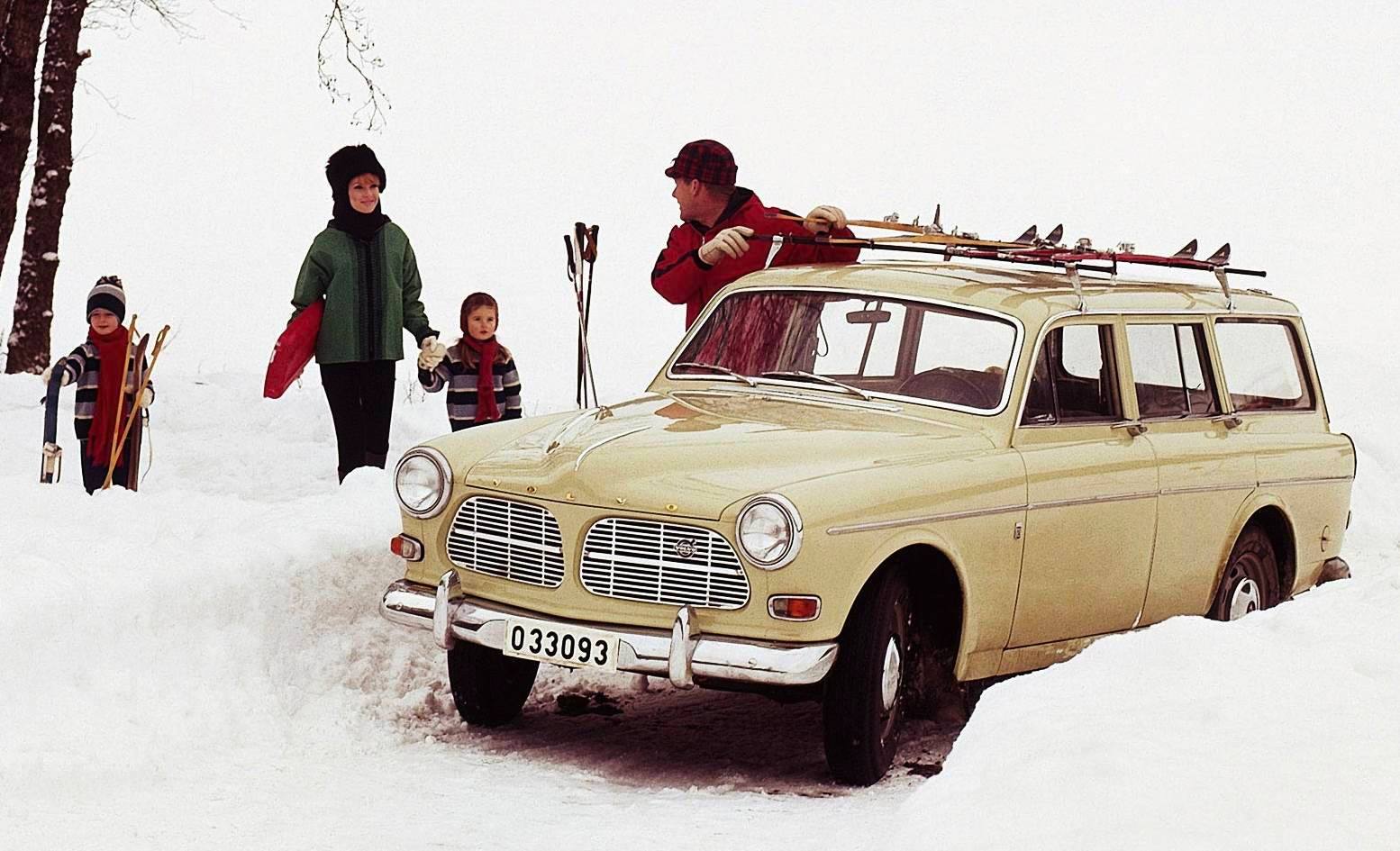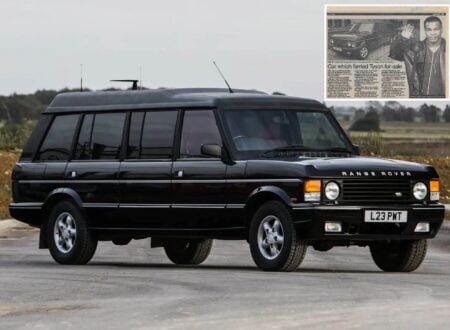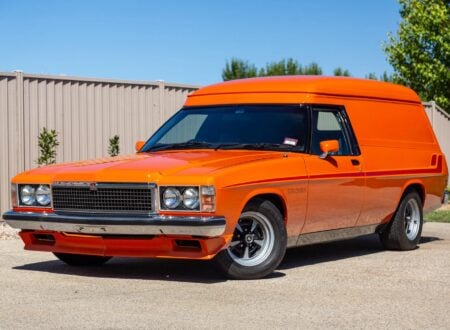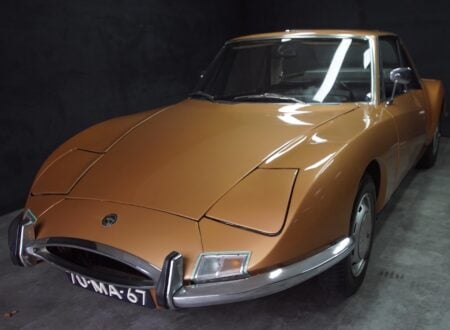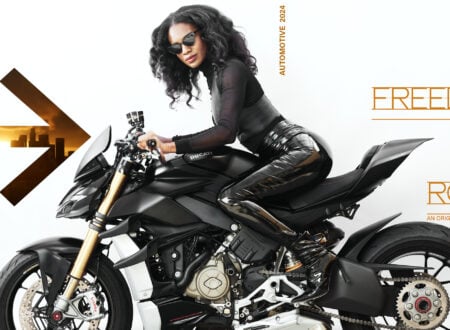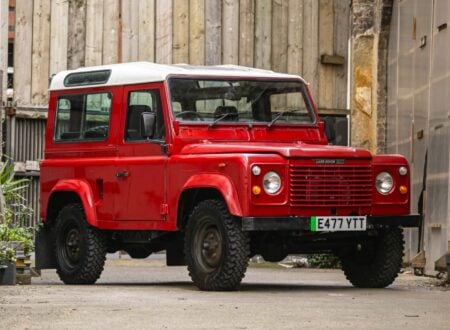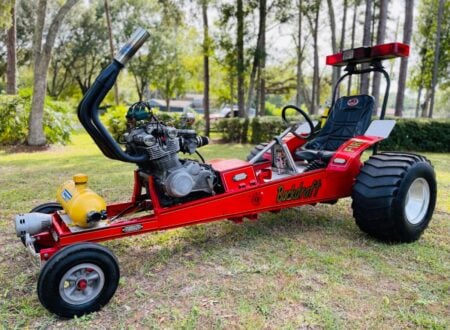Introduction: The Volvo Amazon is Born
Although often described as being figures from Greek Mythology there can be little doubt that a tribe of warrior women known as the Amazons existed in reality. Among the many accounts mentioning the Amazons are those that place them fighting in the Trojan Wars, meeting with Alexander the Great, and Roman General Pompey (who was assassinated during the time of Cleopatra and Mark Antony) mentions them.
So Volvo’s choice of the name “Amason” (it was originally spelt with an “s”) for their new post-war car seems to be a curious one: perhaps Volvo’s new car was to be a little warrior lady that would take on the big guys of the automotive industry and make her mark. The Volvo Amazon certainly achieved that.
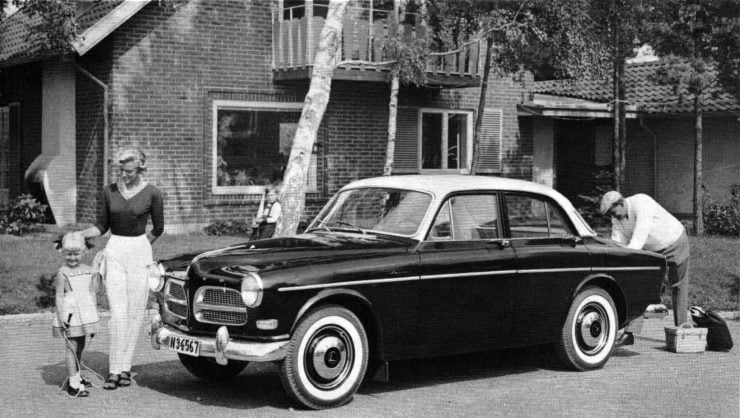
Overall Design: Many Ideas Make a Car Design Work
The story behind the design of the Volvo Amazon is quite complex and takes in influences from a number of sources. Volvo had recruited Jan Wilsgaard from the Handicraft Society School (which is nowadays called the HDK, School of Design and Crafts). The young Wilsgaard’s first design work for Volvo was a large V8 powered car called the Volvo Phillip made in 1950.
The car weighed 1,587 kg and the cast iron 3.6 liter V8 produced 120 bhp with the result that the car’s performance was lacking. The project was abandoned although the prototype remains on display in the Volvo Museum in Sweden.
Jan Wilsgaard set to work on a new design this time based on Volvo’s much loved PV444 but with his own body design on it. This was the P179 prototype, a four seat two door coupé fitted with the B14 four cylinder engine. The prototype proved to be heavy, having poor performance with the modest B14 engine under the hood, but it was a promising start. That start was brought to an end however when the car was crashed by a Volvo engineer.
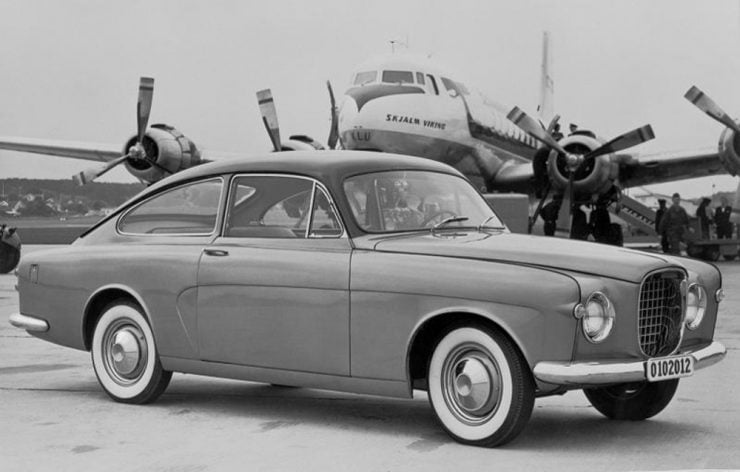
Jan Wilsgaard was not the only designer working on the new model project. Helmer Petterson was given the job of restyling the existing PV444 but retaining the roof line and general body shape. His prototype was the PV454 which featured a split front grille which likely inspired Wilsgaard’s later split front grille of the Amazon.
Another person, Gosta Wennberg, who was not employed by Volvo, took a different approach in 1952 and used the floor-pan and mechanical parts of Volvo’s existing PV444 on which to have a new body designed for it by Giovanni Michelotti.
Wennberg originally intended to create a car that would be built by Ghia-Aigle in Italy, but which finished up being coach-built by Vignale. The resulting prototype was very promising and to ensure maximum publicity the car was called the Volvo Elisabeth by the Swedish press in honor of Sweden’s Queen Elisabeth who was crowned that year.
This prototype looked promising but was only a two seat coupé, and it was rather expensive. Volvo wanted their new replacement for the PV444 to be a four or five seater so the Michelotti design was interesting to them, but needed some changes to be made.
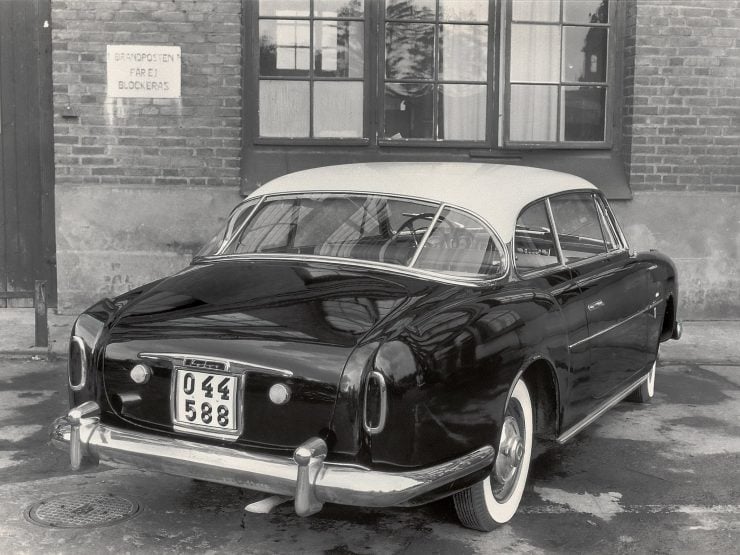
A PV444 floor-pan was sent to Vignale with instructions to make it a four seater. This 1954 prototype, the Elisabeth II, also proved disappointing and too expensive, but despite the fact that the project had been initiated by a private individual it was a significant inspirational step towards the creation of the Amazon.
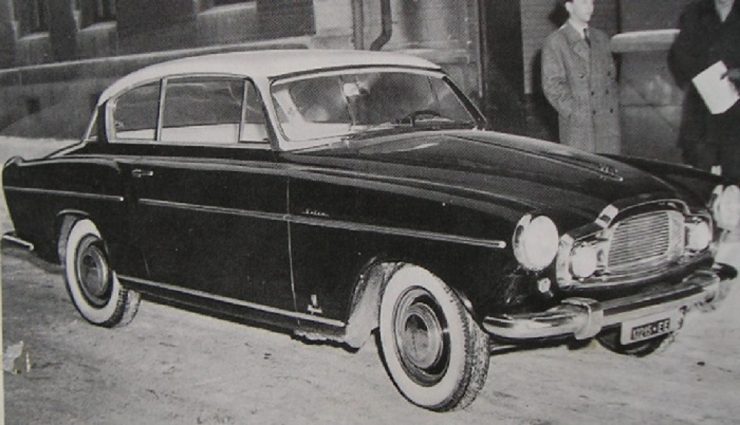
Thus it was that by 1954 there had been a great deal of design and development work done and Jan Wilsgaard had something of a Swedish Smorgasbord of ideas on his plate as he started the process of putting together something that he hoped both management and customers would find to their taste.
The resulting design has been said to bear some resemblance to the Virgil Exner designed Chrysler New Yorker and the powerhouse 300 hp C-300 which both appeared in 1955, and while it is possible that there may have been some late design influence from them, such as the front end styling of the C-300, the split grille concept was established by Volvo’s designers by 1954, before the C-300 appeared, so claims of those influences seem doubtful. The new Volvo Amazon demonstrated above all a blending and refining of the design process that had gone on in Sweden.
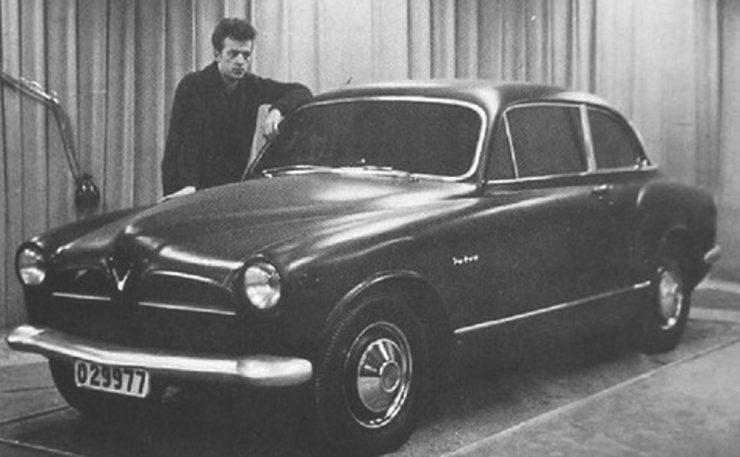
With the design established and a name chosen for the new car Volvo were surprised to find that a German motorcycle manufacturer Kreidler had prior use rights to the “Amazon” name and were not willing to allow another manufacturer to use it: the name was used on their Kreidler “Amazone” moped.
Although the name Kreidler is virtually unknown nowadays we should be aware that in the 1950’s they were a very popular brand in Germany (in 1959 fully a third of all motorcycles in Germany were made by Kreidler). Kreidler agreed that Volvo could use the “Amazon” name (spelt with a “z”) only in Nordic markets, and not elsewhere.
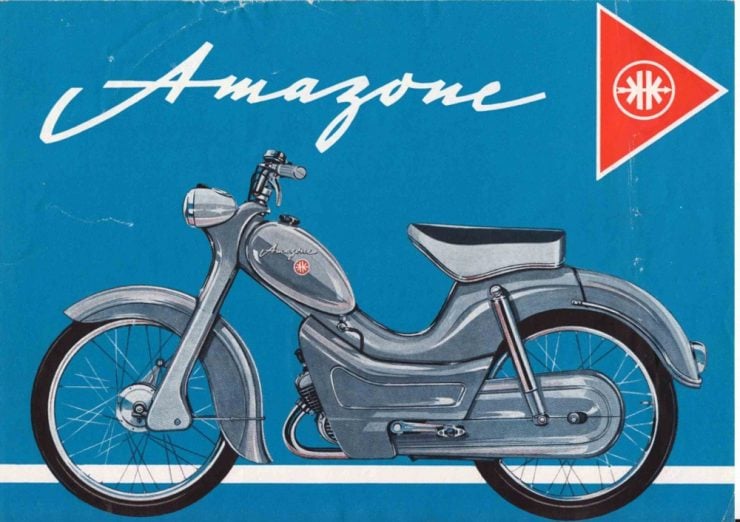
Thus it was that the Volvo Amason became the Volvo Amazon in Sweden and Nordic countries and for the rest of the world it was given a model number. The use of model names can be subject to cultural interpretation and so model numbers can be a much safer marketing strategy for an international seller, so perhaps it was for the best. The name Amazon was informally used for this model around the world however, and Kriedler quietly drifted into obscurity.
Volvo Amazon – Models and Specifications
The Volvo Amazon was first made as a four door sedan, then as a two door in 1961, and the station wagon model 221 (and sports model 222) in 1962. The car used a unibody construction and Volvo paid great attention to giving the bodywork a phosphate treatment to ensure paint adhesion and also made good use of rust inhibiting coatings.
The controls were laid out in a conventional way but with the handbrake lever being located in the typical British position on the outside of the driver’s seat rather than in the center of the car. This was done to make it easy for Volvo to use a front bench seat if required in future models. In reality no bench seat models were made (except for some that were later made in Chile) so the location of the handbrake could have been in the center of the vehicle where it is more convenient to use because the same hand is used for the gear lever and handbrake.
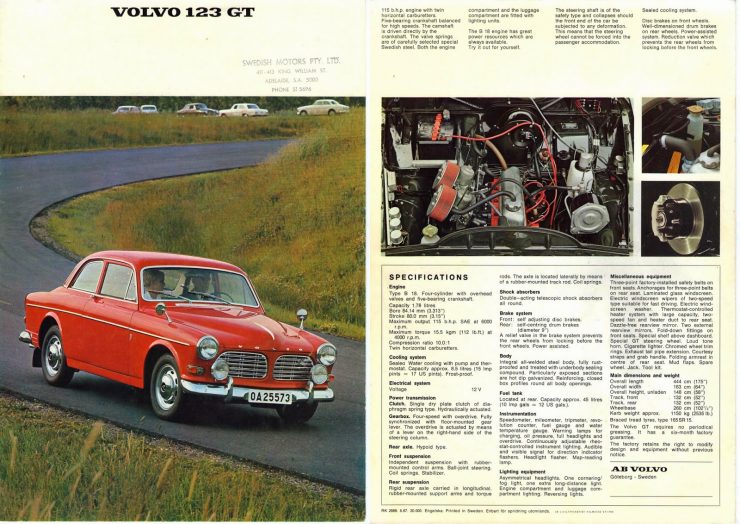
Front suspension was fully independent by double wishbones with coil springs and telescopic shock absorbers, attached to a substantial cross-member beneath the engine. The rear suspension was a live axle with trailing arms and coil springs. Early cars used a single radius arm on each side, and that proved to be a weakness, so in 1966 that system was replaced with twin trailing arms which proved to be vastly superior.
Brakes of the Amazon were initially hydraulic drums all around up until 1964, after that the cars were fitted with front discs and rear drums. Dual hydraulic system brakes were introduced in August 1968. The disc brakes acquired a reputation for being excellent, even for very hard use such as in historic rallying, however if lightly used the pads can tend to wear too slowly and the caliper pistons may become sticky or seize because of lack of movement. Servo assistance for the brakes was initially available as an option and later became standard.
The steering system was by cam and roller with the steering boxes made either by ZF or Gemmer. Electrical system was 6 volt from 1957-1961 and then 12 volt.
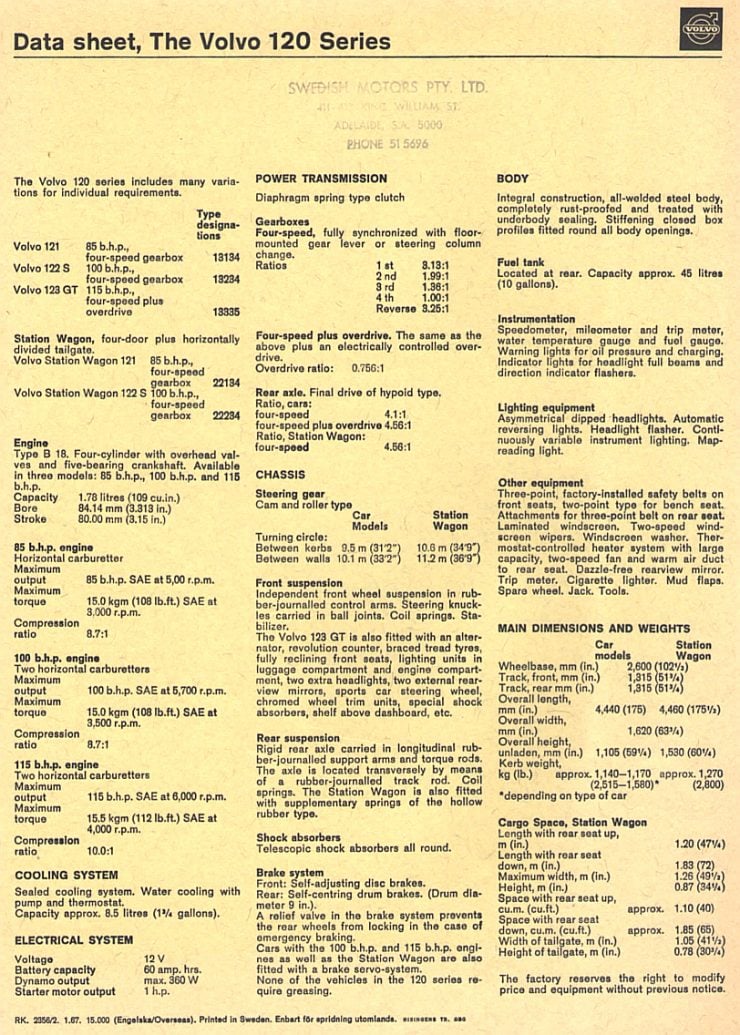
The Volvo Amazon was fitted with an inline four cylinder OHV engine, of which a number of variants were used. The first model, the Volvo 121, was fitted with the 1,583 cc B16 engine equipped with a single carburetor and producing 66 bhp @ 4,500 rpm – later models used the 4-speed M4 transmission.
In 1958 a sports model was made available called the Volvo 122S. The 122S engine was fitted with dual carburetors and produced 85 bhp @ 5,500 rpm. In 1962 the 1,778 cc B18 engine was introduced.
The B18 engine in its single carburettor version produced 75 bhp (SAE) @ 4,500 rpm. There were two twin carburetor versions; the B18B engine fitted with either twin SU or Stromberg carburetors and producing 100 hp, or the high compression version producing 115 hp which featured in the Volvo 123GT of 1967.
The last engine option offered was the 1,986 cc B20 in the 123GT. The B20 produced 118 bhp but at the time was not approved for competition by the FIA.
The first gearbox used on the Volvo Amazon 120 was Volvo’s own H6 three speed manual. The H6 was replaced by the M30 and M31 gearboxes in 1961. The M30 was a three speed all synchromesh gearbox that was also for a time offered with an automatic clutch.
The M31 was a three speed all synchromesh gearbox with a Laycock de Normanville electric overdrive on second and third gears. For the Volvo 122S twin carburetor sports models the M40 and M41 four speed gearboxes were offered. The M40 being a four speed all synchromesh gearbox and the M41 being a four speed all synchromesh gearbox with Laycock de Normanville electric overdrive working on the top two gears.
In 1964 Volvo offered an automatic transmission option for the four door and two door sedans. The transmission used was a Borg Warner BW35 three speed and in 1967 it was also made available as an option for the station wagon as well. The manual gear-change levers were mounted on the central floor whereas the Borg Warner automatic control lever was on the steering column.
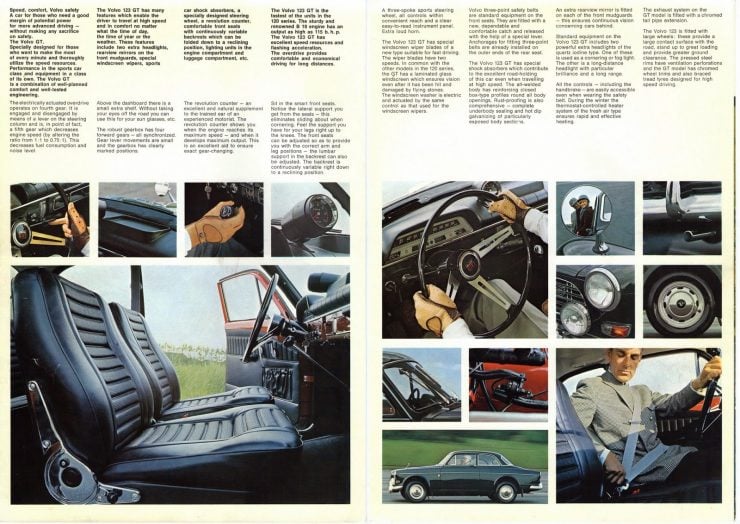
Volvo were the first manufacturer to provide front seat belts in a production car as standard equipment, fitting the 120 series Amazons with front seat lap belts in 1958. Subsequently Volvo’s Nils Bohlin invented the three point seat belt and these became a standard fitting in Volvo 120 series Amazons in 1959.
Production of the Volvo Amazon officially ended on July 3rd, 1970, although in the Canadian Halifax and the South African Durban factories production continued for a little while past that date as the parts inventory was used up.
The Volvo Amazon on the Road
British racing driver and 1958 World Champion Mike Hawthorn did a review of the Volvo Amazon 122S twin carburetor sports model for a British newspaper and made some quite delightful pronouncements about it.
Hawthorne discovered that the gear-change of the 122S was as “stiff as the noblest upper lip” but that the car had a “take-off as vivid as a rocket burst” while the overall finish of the car was “as splendid as the midnight sun”. In other words he was saying in his exquisitely British way that this was a well put together little bucket of bolts that leaves the opposition for dead at the traffic lights, although you have to get used to the gearchange so you can stir the cogs efficiently.
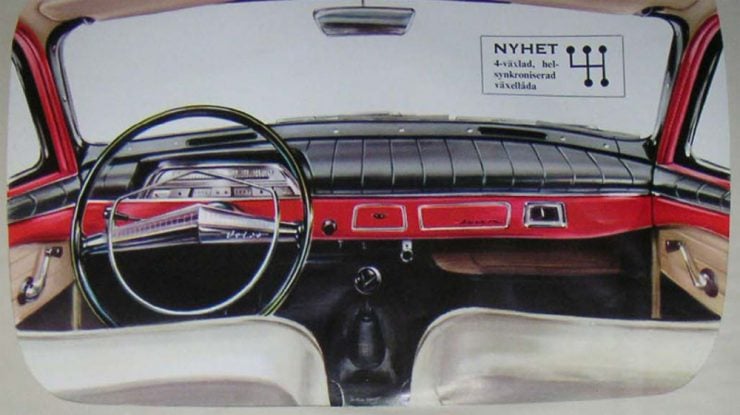
The Volvo Amazon 120 Series cars developed a reputation for being fun to drive, having nice levels of performance: of being built like a tank but not handling like one. In short, if one were thinking of opening one’s chequebook for a car then a Volvo 120 Series would be a great choice.
The Amazon in Motorsport
Despite its conservative “Clark Kent” outward appearance the Volvo Amazon proved itself to be a fiery little warrior both on the race track and in rallying. A bit of an industry sprang up to make the Amazon go rather more quickly than the factory models. Prominent names include TG in Malmö, Timos Motors in Stockholm, Speedman in Gothenberg, Bertils Motors in Västeras, and last but not least Ruddspeed in Britain, whose full conversion treatment would raise the price of your Volvo 122S from £1,100 to £1,414 and give it a standing quarter mile time of 18 seconds.
The Volvo Amazon was a very popular competition car; some of its notable podium places were first places in the European Rally Championships in 1963 and also that year first in the European Ladies Championship. In 1965 the Amazons took first in the Shell 4000 Rally in Canada, first in the RAC European Touring Car Championships, First in the World Championships for Manufacturers, and First in the Acropolis Rally. A Volvo Amazon was the weapon of choice for Joginder Singh and Bharat Bhardwaj for their entrance into the 1966 African Safari Rally in which they finished third.
What we’ve listed is a tiny fraction of the motorsport successes achieved by the Volvo Amazon and the gentlemen and ladies who campaigned them. Even today the Amazon is a car of choice for vintage racing and rallying, and the tally of victories continues to climb year after year.
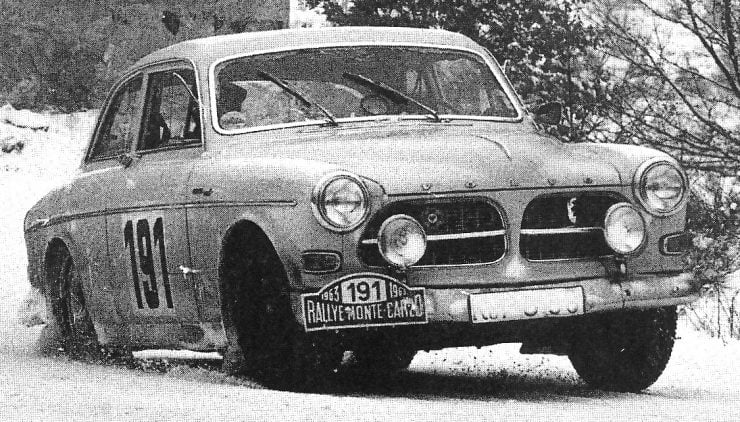
Conclusion
The Volvo Amazon proved itself to be one of the most practical motor cars of the twentieth century. It was not pretentious, but one of the advertisements for the Amazon sums things up well. It stated “This car is built on the premise that when a person goes into hock for a new car, that car should last long enough to get him out of hock for a while.”
The Amazon combined two often incompatible things; it was built to be an enjoyable driver’s car, and it was built to last a lot longer than most of the other cars on the market: it delivered both enjoyment, and longevity.
The Amazon may not have been the fastest car on earth, but it was comfortable, even offering seats with lumbar adjustment, and it took out its fair share of motor sport trophies. It may not have been the most exciting car to look at, but it had near timeless lines whose retro style looks fabulous even in this twenty first century.
Nowadays, a Volvo Amazon with wider rims and modern tires and a decent paint job will tend to gather a crowd, although an Amazon owner is typically not a person who desires a crowd to gather, they tend to be people who bought the car because, as Mike Hawthorn observed, this was a car whose quality was “as splendid as the midnight sun”.
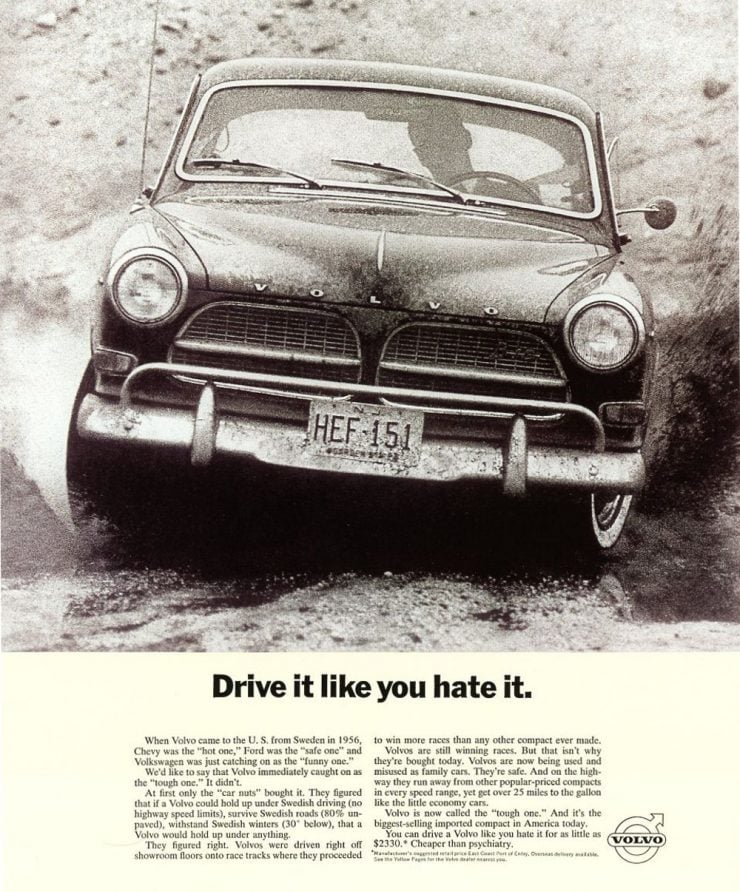
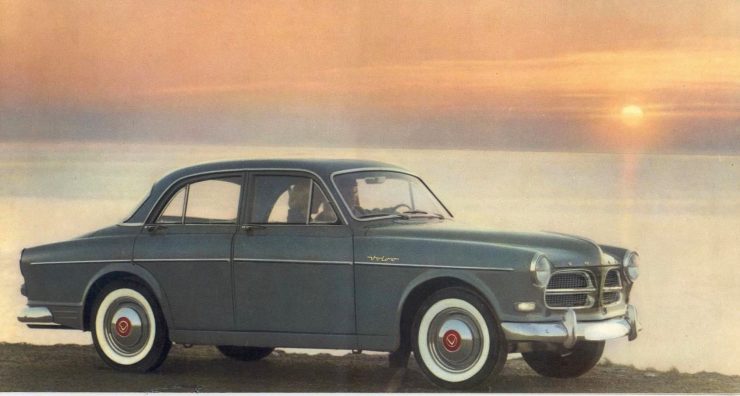
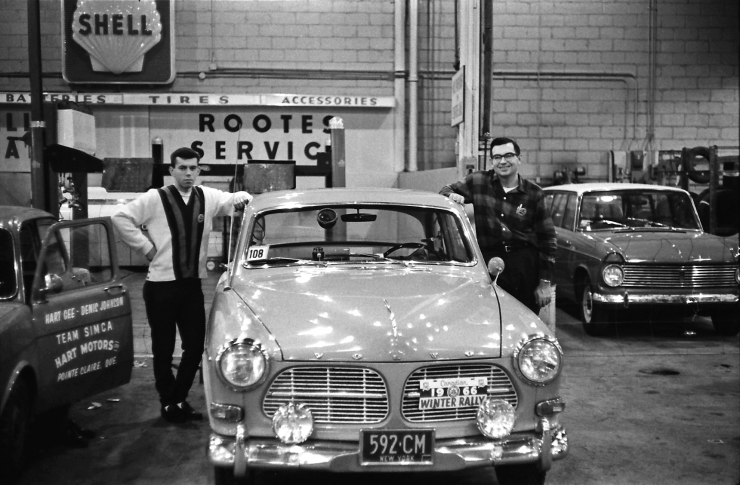
Picture Credits: Volvo, Kreidler.

Jon Branch has written countless official automobile Buying Guides for eBay Motors over the years, he’s also written for Hagerty, he’s a long time contributor to Silodrome and the official SSAA Magazine, and he’s the founder and senior editor of Revivaler.
Jon has done radio, television, magazine, and newspaper interviews on various issues, and has traveled extensively, having lived in Britain, Australia, China, and Hong Kong. The fastest thing he’s ever driven was a Bolwell Nagari, the slowest was a Caterpillar D9, and the most challenging was a 1950’s MAN semi-trailer with unexpected brake failure.

